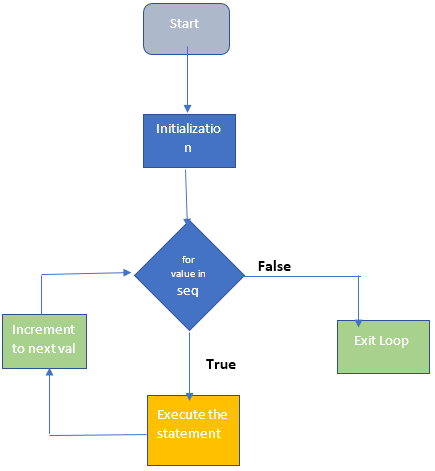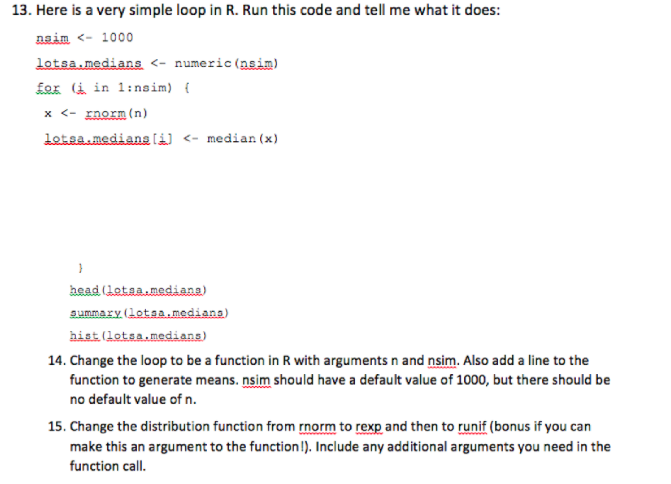

#HOW TO RUN A LOOP IN R CODE#
This following script uses the function() command to create a function (based on the code above) which is then stored as an object with the name Fibonacci: Fibonacci Fibonacci(10) Create a new R script file, and copy this code into it: a a b print(a)

where each number is the sum of the previous two numbers. We'll start by using a "while loop" to print out the first few Fibonacci numbers: 0, 1, 1, 2, 3, 5, 8, 13. Incrementing i is important as this will eventually meet the exit condition. So, the body of the loop is entered and i is printed and incremented. Here, the testexpression is i < 6 which evaluates to TRUE since 1 is less than 6. The expression can be a single R command - or several lines of commands wrapped in curly brackets: for ( variable in sequence ) In the above example, i is initially initialized to 1. In R a while takes this form, where variable is the name of your iteration variable, and sequence is a vector or list of values: Most R functions deal with vectors in an efficient and mathematically intuitive manner. Frequently, you can eliminate loops by using vectors rather than scalars. Relevant help pages can be found with help("Control") and help("Function"). If it is absolutely necessary to run loops in loops, the inside loop should have the most number of cycles because it runs faster than the outside loop. On the preceding pages we have tried to introduce the basics of the R language - but have managed to avoid anything you might need to actually write your own program: things like if statements, loops, and writing functions.
#HOW TO RUN A LOOP IN R HOW TO#
In this article you will learn how to create a for loop in R programming with examples & exercises for. Notice that %do% operator after the loop definition, I’ll talk more about it later.You probably won't need this information for your assignments A for loop is used to repeat a block of code. The range L:H will cause the loop to execute. Unlike in R, the loop is always interpreted as an upward counting loop. The foreach version returns a list with the results automatically. The bounds in a for loop must be integers.

As aberrant formation and persistence of R loops block transcription.

Notice that I have to create a vector x to gather the results before executing the loop. (B) Nuclear run-on assays showing the levels of nascent trancripts in control. With the for loop we can execute a set of statements, once for each item in a list, tuple, set etc. This is less like the for keyword in other programming languages, and works more like an iterator method as found in other object-orientated programming languages. The foreach package (the vignette is here) provides a way to build loops that support parallel execution, and easily gather the results provided by each iteration in the loop.įor example, this classic for loop computes the square root of the numbers 1 to 5 with sqrt() (the function is vectorized, but let’s conveniently forget that for a moment). A for loop is used for iterating over a sequence (that is either a list, a tuple, a dictionary, a set, or a string).


 0 kommentar(er)
0 kommentar(er)
